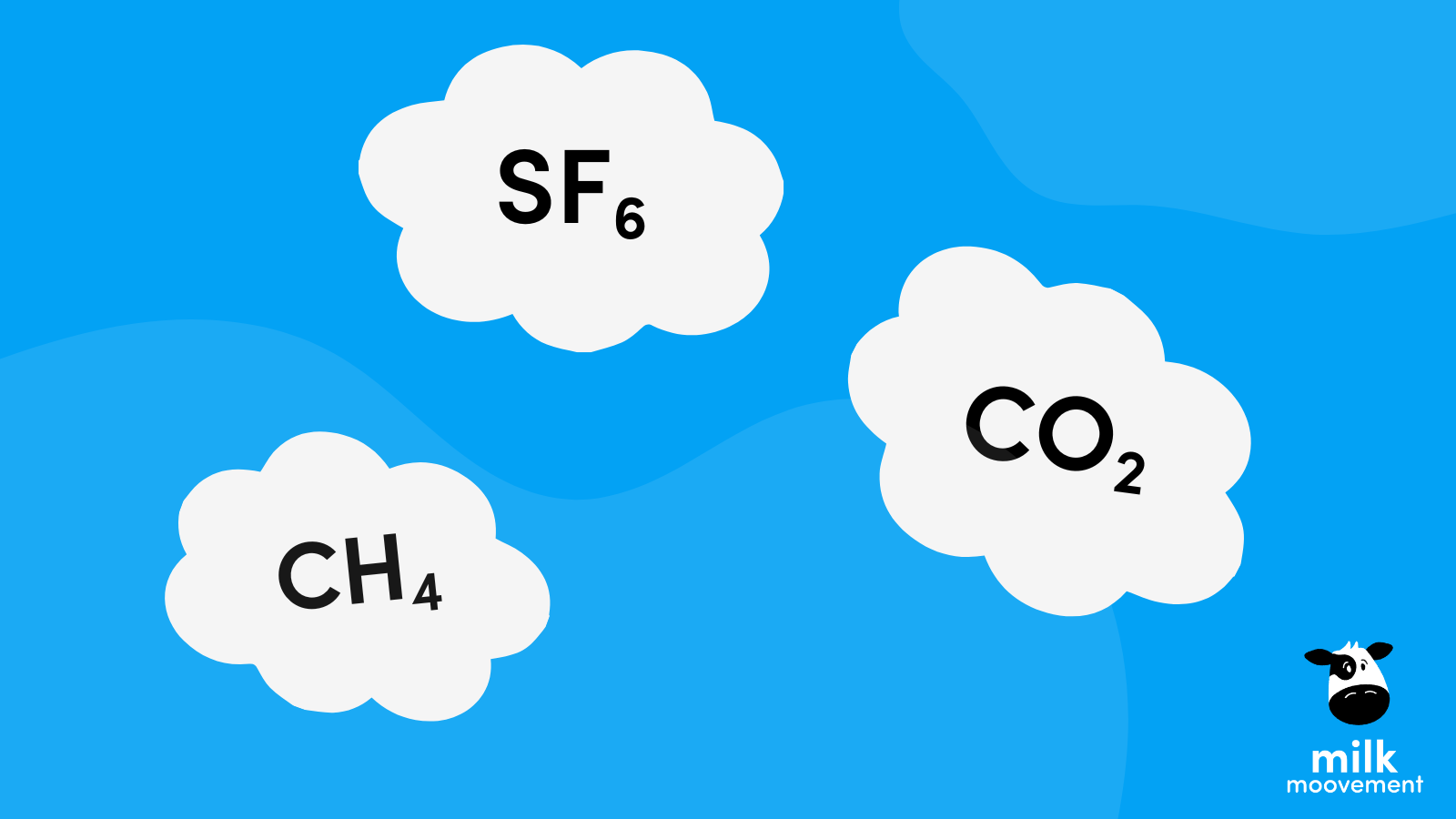Methane, Cows, and Climate Change

Methane is a Greenhouse Gas (GHG) emitted from both human-influenced and natural sources. According to the U.S. Environmental Protection Agency, methane makes up 11% of the main GHGs from anthropogenic sources.
One of these sources is dairy farming. Dairy farmers produce milk that supplies a significant amount of food for people all over the world. In 2017, it is estimated that U.S. dairy farms produced the equivalent of 74 gallons for each of the 327 million people in the country. It has been estimated that dairy is responsible for 1.9% of total GHG in the U.S. with methanogenesis, or “cow burps,” being one of the main sources of this greenhouse gas.
Ruminant Digestion and Methanogenesis
Unlike humans, ruminants are mammals that can digest fiber in grasses. Methane is a product of methanogenesis, which is a process that occurs when microbes in the cow’s rumen digest fiber into energy. This is a natural process in all ruminant animals.
The bacteria responsible for methane production are called methanogens. There are over 50 different species of methanogens that need an anaerobic environment, like a rumen, to thrive.
It is estimated that between 2% to 12% of a ruminant's energy is lost through the process of enteric fermentation. More productive cows have higher total methane emissions but much lower emissions per unit of product. Therefore increasing productivity across production systems increases food security and strengthens farmer livelihoods.
The good news is that there are large opportunities for low-cost mitigation, widespread social, environmental, and economic benefits!
But how do we know which methane reduction strategies are effective?
Methods of Measurement
There are several ways to measure methane emissions. The two we will look at here are the respiration chamber and the sulphahexaflouride tracer technique.
Using the chamber method, methane emissions are calculated from changes in gas concentrations between the air inlet and outlet. The chambers are open circuits and cows are usually in the chambers for two to four days at a time. This method can provide accurate references for research purposes. The downside is that the chamber methods have both high investment and labor costs. Additionally, it is not suitable for a large number of animals.
The sulfahexaflouride method uses a permeation tube that releases sulfahexaflouride gas into the reticulon-rumen at a known, constant rate. Eructated gases containing both methane and sulfahexaflouride are collected into evacuated canisters and the ratio of methane to sulfahexaflouride can be used to estimate daily methane. Background gases and weather conditions have been identified as sources of variability..png?width=393&height=983&name=Blue%20Entrepreneur%20Personalities%20Business%20Infographic%20(1).png)
Mitigation Strategies
Currently, there are several ways to reduce methane from enteric fermentation including dietary changes, feed additives, and selective breeding.
Dairy has significant room for improvement while continuing to feed a growing population and can also sequester large amounts of carbon.
Dietary Changes
The longer fibrous materials hang around in the rumen, the more time the methanogens have to produce methane. Farmers are focusing on producing high-quality forages. It’s also shown that increasing the proportion of starchy concentrates, adjusting forage species, and maturity affect methane losses from the rumen.
Feed Additives
There is an increasing collection of knowledge and studies showing that feed additives, like seaweed, can significantly reduce methane emissions from dairy and beef cows.
Selective Breeding
There is a potential for sustained and long-term sulfahexaflouride emission reductions through the selective breeding of cattle, like selecting low-emitting animals for breeding-based emission measurements and indirectly on traits correlated with sulfahexaflouride emissions. Some of these traits include feed efficiency, heat-stress tolerance, and disease resistance. It's estimated that employing selective breeding for methane reduction can reduce the methane emissions from enteric fermentation by 24%.
The Verdict
Few people are more connected to the environment than farmers. Farmers rely on a stable climate to be able to make food for people on the planet and provide a livelihood for their families. As a result, we see farmers at the forefront of the race to reduce GHG emissions and sequester carbon back into the soils they manage. There are farmer-led initiatives, all across the world focused on making their industries net zero.
For more information on the great work farmers, scientists and policymakers are undertaking, check out these North American initiatives: U.S. Dairy Net Zero Initiative and Dairy Farmers of Canada’s Net Zero By 2050.
-1.png?width=2649&height=724&name=MM%20Logo%20-%20Horizontal%20(Digital%2c%20Png)-1.png)
.png)
.png)